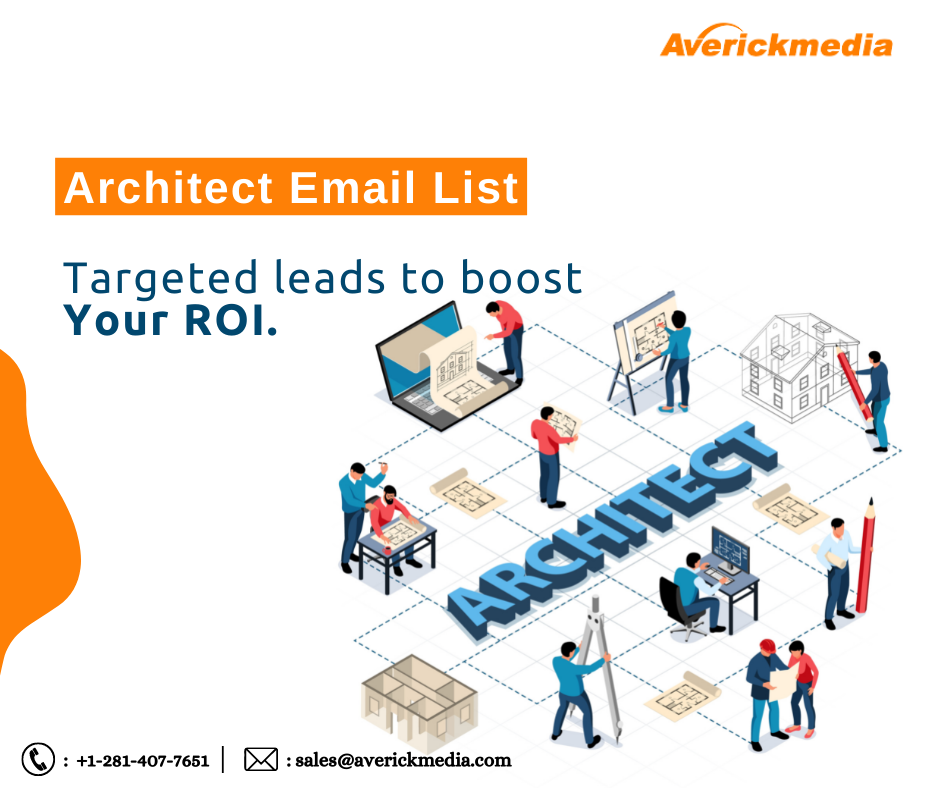In today’s digital age, email marketing remains one of the most powerful tools for reaching and engaging with potential clients in the architectural industry. However, to unlock its full potential, you need to have a robust email list filled with qualified leads. This article will guide you through the process of building an effective architect email list that drives engagement and conversions.
Introduction to Building an Architect Email List
Architects, like any other professionals, rely on email communication for networking, project updates, and industry news. Therefore, having an email list allows you to directly connect with them, nurturing relationships and showcasing your services.
Understanding Your Target Audience
Before you start building your email list, it’s crucial to understand who your target audience is. Identify the specific segment of architects you want to reach and tailor your email marketing efforts to meet their needs and preferences.
Creating Compelling Lead Magnets
Offer valuable resources such as e-books, guides, or templates that appeal to architects’ interests and challenges. These lead magnets serve as incentives for them to subscribe to your email list.
Building a Landing Page to Capture Leads
Design a visually appealing landing page with clear calls-to-action that entices visitors to sign up for your email list. Optimize the page for conversions by removing distractions and focusing on the benefits of subscribing.
Implementing Opt-in Forms
Place opt-in forms strategically across your website, including on high-traffic pages and blog posts. Make the forms easy to fill out and ensure that the subscription process is seamless.
Crafting Irresistible Email Content
Deliver valuable content to your subscribers that addresses their pain points and provides solutions. Use engaging subject lines to increase open rates and personalize the content to resonate with architects.
Segmenting Your Email List
Segment your email list based on factors such as location, industry, or engagement level. This allows you to send targeted messages that are more relevant to each subscriber, increasing the effectiveness of your campaigns.
Automating Email Campaigns
Save time and streamline your email marketing efforts by setting up automated email sequences. Welcome new subscribers, nurture leads, and re-engage inactive subscribers through automated workflows.
Monitoring and Analyzing Email Performance
Track key metrics such as open rates, click-through rates, and conversion rates to evaluate the success of your email campaigns. Use this data to make informed decisions and optimize your strategies for better results.
Maintaining Email List Hygiene
Regularly clean your email list to remove inactive subscribers, invalid email addresses, and spam traps. This helps improve deliverability and ensures that your messages reach the intended recipients.
Engaging Subscribers with Personalization
Personalize your emails by addressing subscribers by name and sending them relevant content based on their interests and behavior. This personal touch fosters a stronger connection and encourages engagement.
Encouraging Social Sharing and Referrals
Encourage subscribers to share your emails on social media and refer their colleagues and peers to join your email list. Offer incentives such as exclusive content or discounts to incentivize sharing and referrals.
Staying Compliant with Email Regulations
Familiarize yourself with email marketing regulations such as GDPR and CAN-SPAM laws to ensure that your campaigns are compliant. Obtain consent from subscribers before sending them marketing emails and provide easy opt-out options.
Continuously Growing Your Email List
Make list growth a priority by implementing tactics such as hosting webinars, running contests, or partnering with industry influencers. Continuously optimize your strategies to attract new subscribers and expand your reach.
Conclusion
Building an effective architect email list requires a strategic approach that focuses on understanding your audience, delivering valuable content, and optimizing your campaigns for maximum impact. By following the steps outlined in this article, you can create a targeted email list that nurtures relationships, drives engagement, and ultimately helps you grow your architectural business.
FAQs (Frequently Asked Questions)
- How often should I send emails to my architect email list?
- It’s essential to find the right balance between staying top-of-mind and avoiding overwhelming your subscribers. Aim for a consistent schedule, such as bi-weekly or monthly, and monitor engagement metrics to adjust as needed.
- What types of content resonate best with architects?
- Architects often appreciate educational content, project showcases, industry insights, and tips for improving their practice. Experiment with different content formats to see what resonates best with your audience.
- How can I encourage architects to subscribe to my email list?
- Offer valuable lead magnets such as e-books, guides, or templates that address common challenges faced by architects. Highlight the benefits of subscribing, such as access to exclusive content or special offers.
- What are some effective ways to segment my architect email list?
- Consider segmenting your list based on factors such as location, project type, industry niche, or engagement level. This allows you to send targeted messages that are more relevant to each group of subscribers.
- How can I measure the success of my email marketing campaigns?
- Track key metrics such as open rates, click-through rates, conversion rates, and overall ROI (return on investment). Use this data to identify areas for improvement and optimize your campaigns for better results.

